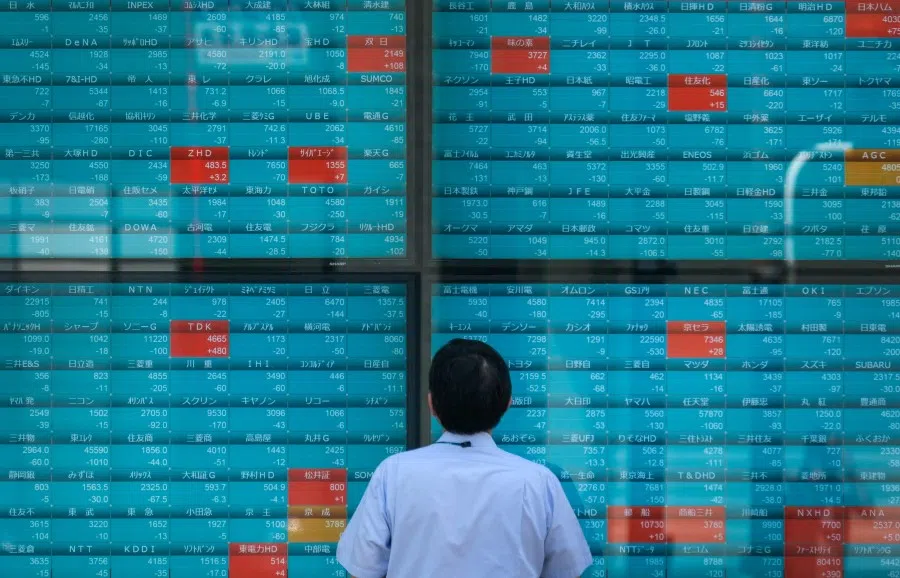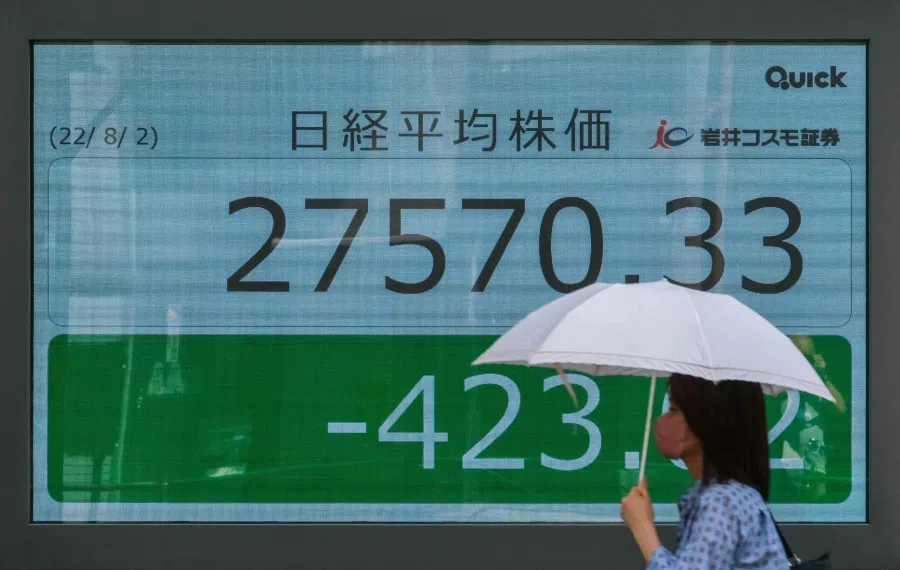At US$3.2 trillion, Japan's overseas assets is still expanding
Economics professor Zhang Rui believes that Japan's massive hoard of overseas assets, along with its ultra-loose monetary policy, has allowed its domestic economy to thrive even amid a weakening currency. In addition, the government's fiscal policies have also made it easy for Japanese investors to venture overseas, adding to Japan's financial prowess.

According to the latest official data, Japan's net overseas assets increased by a record-breaking 5.6 billion yen (US$43 million) in 2021, totalling 411.2 trillion yen (US$3.2 trillion) as of the end of last year. This includes gross overseas assets of 1,249.9 trillion yen and external debt of 838.7 trillion yen, with Japan retaining its position as the largest creditor nation for 31 consecutive years.
Greater purchasing power
A number of countries, such as Germany, China and the US, have made stellar achievements by accumulating and increasing their overseas assets. However, it is rare to see countries sustain vigour and stability in foreign asset accumulation, just as Japan has done.
Many will remember Japan's buying spree of overseas land and properties in the 1980s, including 10% of real estate in the US - Mitsubishi Estate spent US$1.4 billion to buy Rockefeller Centre. Japanese investors also accounted for 25% of the New York Stock Exchange's daily trading volume and over 96% of the foreign capital in Hawaii.
Although the subsequent Plaza Accord subdued Japan's overseas capital for several years, it soon made a comeback, going beyond the US to the whole world. By the end of 1990, Japan's overseas assets had reached 270 trillion yen, ranking top in the world for the first time and unsurpassed since.
Although data show that the yen lost about 11% of its value against the USD in 2021, it did not slow down Japanese investors' purchase of overseas assets...
The purchasing power of a country's overseas assets is often correlated to the value of its currency. Transaction records over time show that the yen has generally appreciated against the USD. Currently, the yen has appreciated over 180% against the USD based on the 1971 exchange rate, marking a significant increase in the yen's purchasing power. In other words, the yen can be exchanged for more USD, thus increasing the currency holder's purchasing power for assets in the global market.

Although data show that the yen lost about 11% of its value against the USD in 2021, it did not slow down Japanese investors' purchase of overseas assets, as the weaker exchange rate would eventually boost the book value of Japan's overseas assets when converted from USD to yen.
Low or negative interest rates undoubtedly reduce the financing costs of enterprises, and QE is equivalent to directly providing liquidity to enterprises.
Unchanged monetary policy
Contrary to its gradual overall appreciation externally, the domestic performance of the yen has continued to languish. This is because of the long-term expansionary monetary policy of Japan's central bank (Bank of Japan, BOJ), in which the short-term benchmark interest rate has decreased from its peak of 9% to -0.1% currently.
Japan has maintained negative interest rates for more than six years and is the first country to implement quantitative easing (QE), where the BOJ purchases government and corporate bonds to maintain long-term interest rates at around zero.
Although central banks of many countries have sharply tightened their monetary policies this year, Japan has explicitly announced that its short-term interest rates and QE policy remain unchanged. Low or negative interest rates undoubtedly reduce the financing costs of enterprises, and QE is equivalent to directly providing liquidity to enterprises. As a result, Japanese investors will have greater confidence to invest capital in overseas markets.
Supportive fiscal policies
In addition to its monetary policy, the Japanese government has adopted fiscal policies to encourage and support overseas investments. Besides tax reductions for corporates, investments, and technological research and development, the Japanese government provides subsidies for expenses incurred by Japanese enterprises during overseas visits for investment opportunities, including airfare and accommodation. Furthermore, enterprises can claim tax deductions for tax payable overseas as well as defer tax payments for overseas income.
The ample, liquid financial assets, especially currency and bonds, have buttressed the ability and confidence of Japanese investors to compete in overseas markets.

The Japanese Ministry of Finance and the BOJ are also collaborating with domestic and overseas financial institutions to offer financial instruments such as guarantees and insurance for enterprises that invest overseas.
Indeed, enterprises, families and individuals are the beneficiaries of the fiscal policies and monetary policies underpinned by low interest rates. Data show that the net profit of all companies listed on the Tokyo Stock Exchange was 33.5 trillion yen in 2021, another record-breaking increase of 35.6% year-on-year.
Overall in 2021, Japanese enterprises set the record of amassing 35,538 trillion yen in cash and cash deposits. Japanese households' financial assets exceeded 2,000 trillion yen, comprising 106 trillion yen in cash and 1,009 trillion yen in various types of cash deposits. Given Japan's population of 126 million, it averages to per capita financial assets of 15.87 million yen.
The ample, liquid financial assets, especially currency and bonds, have buttressed the ability and confidence of Japanese investors to compete in overseas markets.
Gaining and consolidating market share
Japanese investors have repeatedly excelled in overseas securities markets. Data show that Japan's Government Pension Investment Fund (GPIF) is the world's largest pension investment fund, with 187 trillion yen of assets under management, and its 2021 investment income exceeded 38 trillion yen. Of its assets, 50% were in global markets, which are equally split between stocks and fixed income investments.
In the 2021 fiscal year, GPIF recorded returns of 20.67 trillion yen in overseas stocks, accounting for 54% of its total revenue. Concurrently, Japan's private equity funds, worth a total of more than 23 trillion yen, were mainly invested in stock assets in markets such as the US, South Korea, Norway, the UK and China.
Additionally, more individual Japanese investors purchased overseas stocks last year, with annual net inflows to investment trusts of overseas stocks (other than exchange-traded funds or ETFs) exceeding 7 trillion yen, which is the highest ever recorded. Most of these investment trusts with larger net inflows and higher ranking are related to US technology equity funds. Indeed, technology stocks such as Apple and Amazon outperformed in 2021.
There is a trend of Japanese enterprises making structural adjustments through overseas M&A, in addition to gaining and consolidating market share.
Just like investments in financial markets, foreign direct investments also have a hand in growing a country's overseas assets. According to the Ministry of Finance, Japan's foreign investment reached 16.25 trillion yen in 2021 and overseas mergers and acquisitions (M&A) form the core of its investment portfolio.

On closer scrutiny, overseas M&A activity by Japanese enterprises has steadily increased in the past decade, from 6 trillion yen to 24 trillion yen in 2021 and hit record highs every year. Large Japanese enterprises are at the forefront of M&A activity, with 39 overseas acquisitions exceeding 100 billion yen, a year-on-year increase of 71%.
There is a trend of Japanese enterprises making structural adjustments through overseas M&A, in addition to gaining and consolidating market share. For example, to strengthen the competitive advantage of its core business, Hitachi Ltd acquired US digital engineering services company GlobalLogic for 1 trillion yen and divested its core subsidiary Hitachi Metals to a US investment fund for 800 billion yen.
Japan's GDP in 2021 was 542 trillion yen and the value of its net overseas assets was 411.2 trillion yen, equivalent to 76% of GDP. Some have even described the Japanese as creating an overseas Japan.
A top creditor
From its established strategy of nation-building through trade in the 1950s to the strategy of overseas investments after the Plaza Accord, Japan's huge overseas assets are clearly the direct result of this strategic shift. Statistics show that in the 2021 fiscal year, Japan's overseas investment income increased by 14.7%, amounting to 21.59 trillion yen. In fact, Japan is the US's largest creditor, holding US$1.3 trillion of its more than US$30 trillion debt.
Furthermore, Japan's GDP in 2021 was 542 trillion yen and the value of its net overseas assets was 411.2 trillion yen, equivalent to 76% of GDP. Some have even described the Japanese as creating an overseas Japan. Regardless, the advantages of Japan's enormous and robust overseas assets far outweigh the disadvantages.
First, Japan's huge overseas assets can strongly support and maintain its sovereign credit rating, as the market is more likely to affirm an economy that owns more overseas assets as compared with domestic assets. With the USD being the common global currency, Japan's position as an enduring top creditor nation of the US undoubtedly demonstrates its financial prowess. So, although Japan is the nation with the highest debt-to-GDP ratio, no one believes Japan is at risk of default.
On the one hand, Japan can cash out on US debt; on the other hand, Japan's national debt holders are entirely domestic and there is no possibility of trouble from overseas speculative capital. At the same time, abundant Japanese overseas assets can continue to provide ample bond purchasing power, which the market has enough capital to undertake. It is precisely for this reason that Japan's AAA sovereign credit rating remains unaffected regardless of the quantity of Japanese Government Bonds issued.
While the main purpose of Japan's direct investments, especially overseas M&A, is to expand its markets, equally important is the commercial outcome of new technology acquisition to achieve new growth.

Second, sufficient overseas assets can effectively support and drive Japan's participation in the division of labour in the global economy. Due to its extremely diminished domestic resources, especially its population, and weak domestic demand, Japan can only gain an advantage by continuously investing overseas.
While the main purpose of Japan's direct investments, especially overseas M&A, is to expand its markets, equally important is the commercial outcome of new technology acquisition to achieve new growth. In 2021, M&A of overseas telecommunications, semiconductors, and hardware and software equipment companies by Japanese enterprises increased by 30%. Through M&A, they hope to reduce costs and control the value chain as much as possible.
Last year, Japan became the largest investor in Thailand, amounting to 80.733 billion baht, and the third largest investor in Vietnam, totalling US$3.9 billion in industries such as processing and manufacturing, power generation, and wholesale and retail.
Third, an astronomical quantity of overseas assets can significantly slow and alleviate the pressures of the yen's appreciation, as well as enhance Japan's competitive advantage in global trade. The appreciation of the yen against the USD is no longer determined by the yen itself but by the policies and plans that the US requires to gradually depreciate the USD to reverse its trade deficit.
If Japanese capital gravitates towards domestic assets, it will inevitably drive up the yen further, which will be detrimental to export. Conversely, the deployment and accumulation of huge amounts of capital overseas can effectively reduce the pressures of the yen's appreciation and enable Japanese enterprises to set up overseas manufacturing bases through direct investments and overseas M&A. This can effectively avoid export risks brought about by the yen's appreciation, and help to eliminate the risks of trade retaliation due to the over-amplification of trade surplus caused by the yen's depreciation.

![[Big read] Paying for pleasure: Chinese women indulge in handsome male hosts](https://cassette.sphdigital.com.sg/image/thinkchina/c2cf352c4d2ed7e9531e3525a2bd965a52dc4e85ccc026bc16515baab02389ab)


![[Big read] How UOB’s Wee Ee Cheong masters the long game](https://cassette.sphdigital.com.sg/image/thinkchina/1da0b19a41e4358790304b9f3e83f9596de84096a490ca05b36f58134ae9e8f1)
